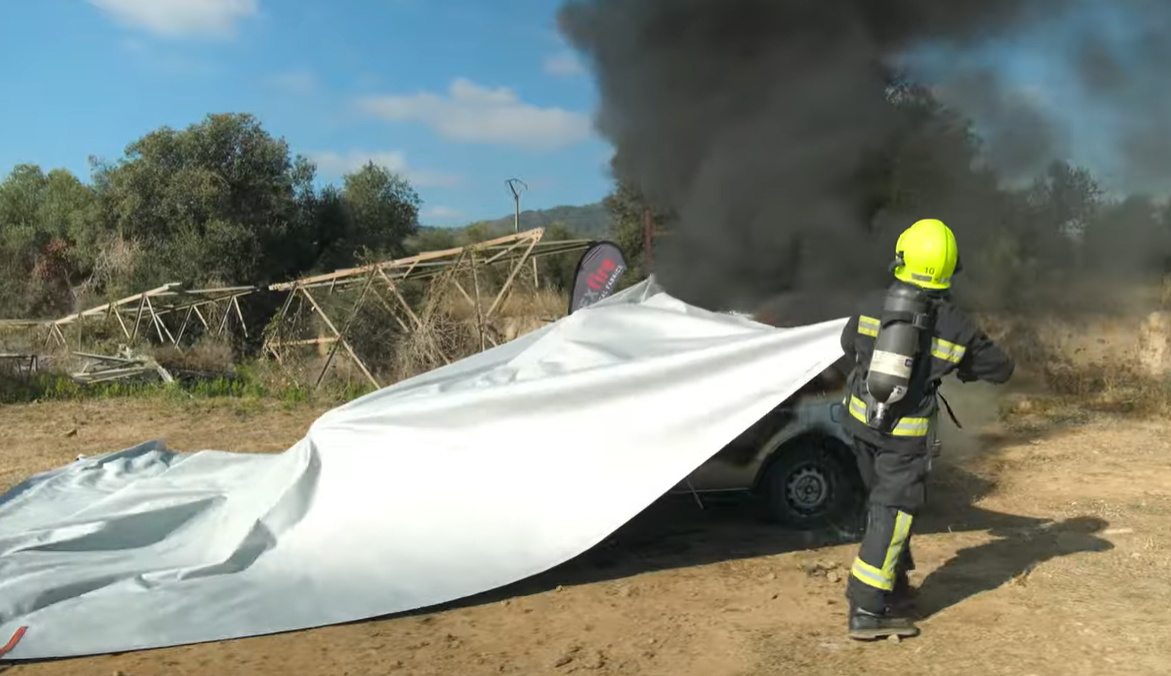
What to look for when shopping for a vehicle fire blanket
While you never hope to experience a situation where you need a vehicle fire blanket, you still need to prepare for one. Luckily for you it can be easy to narrow down which vehicle fire blanket is best for you by identifying the scenario where you would use a vehicle fire blanket. For example, an Internal Combustion Engine (ICE) vehicle burns at a different temperature than an Electric Vehicle (EV) and you cannot extinguish EV fires using standard methods.
The most important factors to consider:
- Weight: you'll likely need two people to carry these
- Flexibility: It must contour to the vehicle easily
- Size: Both for the size of vehicles you work with and extra fabric on the ground to enclose the vehicle fire as much as possible
- Thermal resistance: If you work on EVs, you need a blanket that can handle high temperatures
- Ease and process of deployment: When time is everything, you need the quickest deployment process possible
- Resistance to glass and explosions: After the blanket is on the vehicle, there may be explosions of material and glass that a blanket must be able to endure
- Melting elements that may adhere to the blanket: Even if metal or plastic adheres to the blanket, it must not impact the blanket's effectiveness
- Surrounding materials that may snag, tear or adhere to the blanket: The blanket must be resistant to abrasion
- Acids or other corrosive liquid exposure: The blanket must be resistant to any acids or corrosive liquids that may come in contact during a vehicle fire
- Price: This is a safety investment and you want to ensure you have the best option for your budget
Single-Use vs. Multi-Use: Which is better?
There are single-use and multi-use vehicle fire blankets on the market, but which one should you get? And is one better than the other?
At first glance, it seems more economical and reasonable to get a product that is multi-use. Both will suppress a vehicle fire, and both will prevent a fire from spreading to nearby areas. However, both blanket types will also have damage after usage, like burns or holes, elements melted or stuck during combustion, and contamination with propellants and corrosive acids like carcinogens, etc.
For a multi-use blanket, you will need to go through a very specific decontamination process to clean the entire blanket, even if there isn’t visible damage to a certain area (It can still be contaminated with oils, acids, etc.). You will also need to complete a thorough visual test to ensure there isn’t any damage to the blanket before re-use. For most cases and the considerable increase in price, this is not feasible or reasonable and we highly recommend only using single-use blankets.
Different Blanket Materials
The most common materials used for vehicle fire blankets:
- Silica-based fibers
- Fiberglass-based fibers
- In some cases, Quartz-based fibers
When these fibers become a fabric, they go through different processes to enhance resistance and gain new features like waterproofing, resistance to abrasion, etc. All fire blankets are single use, waterproof, and use flame-retardant fabrics that withstand high temperatures but may have different features.
Bottom Line
Investing in a vehicle fire blanket is just like investing in any other piece of safety equipment for your shop. Ensure you know what elements of a Vehicle Fire Blanket are most important to you and your operation like price, blanket flexibility, and thermal rating before making a decision.
Let's get shopping! Check out what JohnDow's Vehicle fire Blanket has to offer here.





